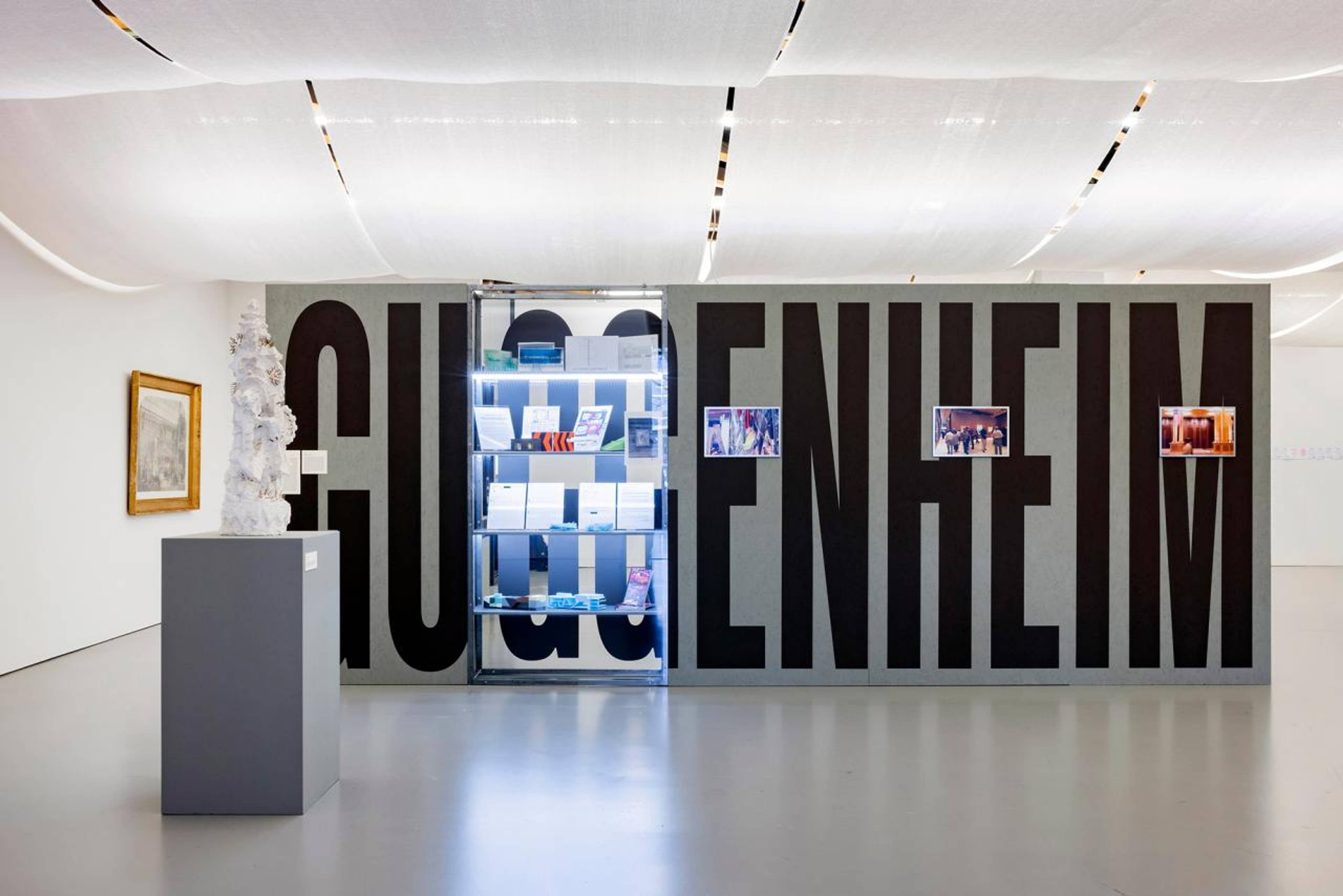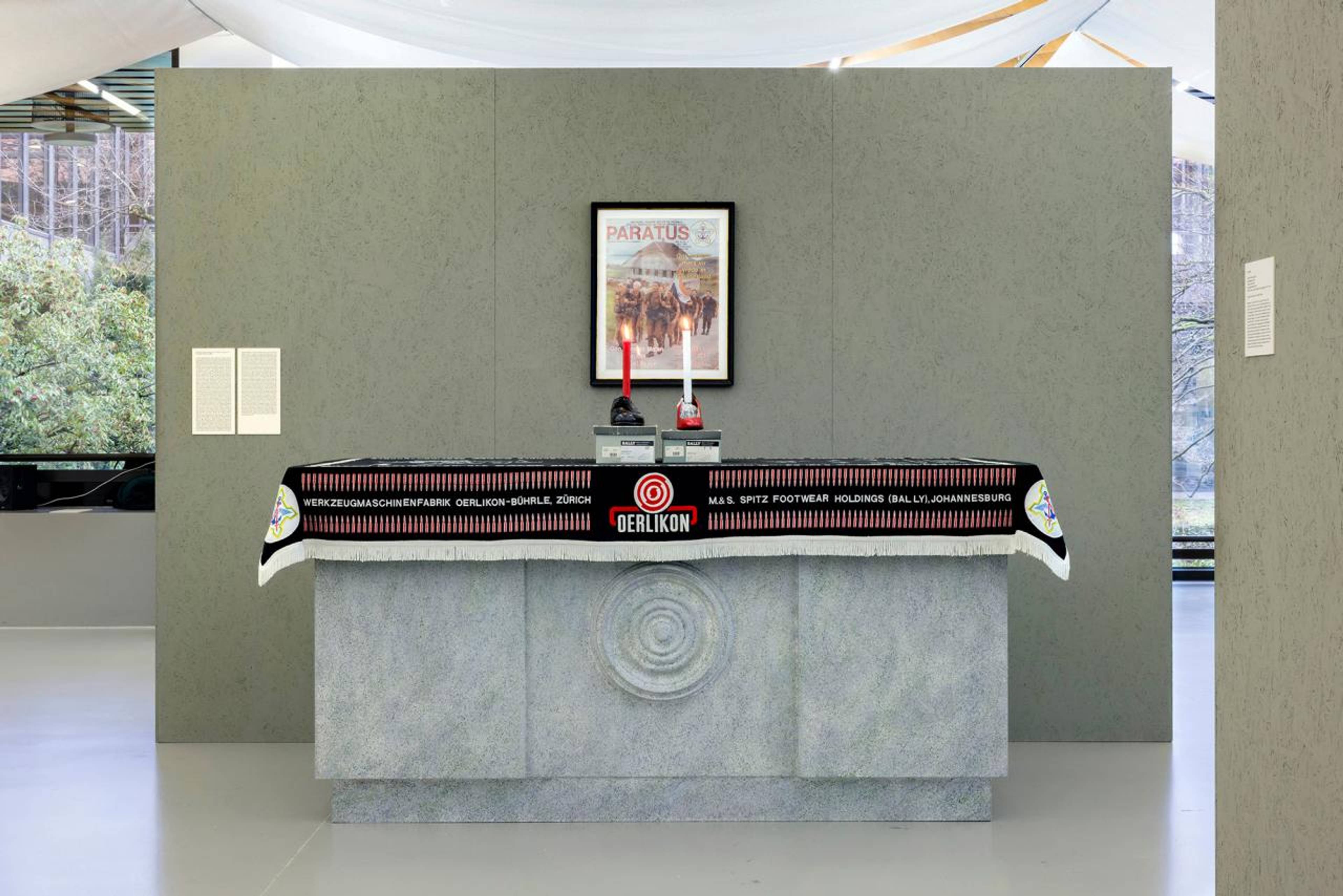The writing on institutional critique of the past three decades tends to ask whether to leave it behind or to open it up to encompass more varied and recent forms. The question evinces that we are dealing with a historical movement, as well as what artist Andrea Fraser calls a “methodology of critically reflexive site-specificity.” The curator Karen Archey has recently suggested that a third wave of institutional critique emerged in the wake of the 2008 financial crisis, only to be accelerated by the COVID-19 pandemic: Based on an understanding of museums as institutions of care, it leaves behind the anti-aesthetic conceptual nature of the first wave, in order to highlight works that are “ feeling rather than thinking .”
It is tempting to read “Unschöne Museen” (Unbeautiful Museums) as merely a historicizing survey of that movement. But that would be to dismiss the way the exhibition subtly arranges works by both established and emerging artists around its central focus: namely, the architecture and infrastructural embeddedness of the new extension of the Kunsthaus Zurich and its housing of the controversial Emil Bührle collection. As is crucial to any productive critical intervention, the show situates itself in its own local context and reprises the museum world’s broader problematics of accessibility, ethics, and representation. It also presents for serious scrutiny and discussion a variety of artistic and academic methods for waging resistance.
View of “Unschöne Museen,” gta exhibitions, ETH Zurich, 2023
The small exhibition space at the ETH Zürich’s Institute for the History and Theory of Architecture is visually anchored by Hans Haacke’s Buhrlesque , produced and first exhibited at the Kunsthalle Bern in 1985. A bullet-studded cloth bearing the names of the Oerlikon-Bührle business and its subsidiary, the shoe brand Bally, is ceremoniously draped over a wooden reproduction of the piece’s original marble table. Adorned in turn with a red high heel and a black men’s dress shoe repurposed as candleholders, it signifies the cynical opportunism of the Bührles, who decorated themselves with the accoutrements of polite society while running a business based on forced labor, selling weapons to the Third Reich, and trading in looted art, before arming the apartheid regime in South Africa well into the 1980s.
Elsewhere, the master’s thesis of Ella Eßlinger and Fabienne Girsberger, “Bauen im Neubau” (Construction in the New Building, 2021) unpacks the Kunsthaus extension through a series of recorded moments in its transformation. A photograph of Rodin’s Gates of Hell (1880–1917) being moved, like the deposition of a monument to a beloved ex-dictator, sits uncomfortably next to a text detailing how Bürhle purchased the Rodin cast – which the Nazis commissioned in 1942 for the never-realized “Führermuseum” (Leader’s Museum) in Linz – from Allied forces and donated it to the Kunsthaus in 1947. To one side, Jøm Utzon and André M. Studer’s rejected 1964 proposal to build a car-free square with a “democratic” theater on the site of the new extension sits alongside models of the Guggenheim Hermitage Museum in Las Vegas and the Flick House in Zurich. While neither of those vanity projects came to lasting fruition, the juxtaposition implies that their exclusive grandeur, non-transparent procurement, and suspect funding did ultimately find expression as part of the Kunsthaus.
Hans Haacke, Buhrlesque, 1985, shoe boxes, shoes, candles, fabric, color photography under glass, frame, wood, plinth, fabric: 243 x 143 cm; frame: 60 x 47 cm; plinth: 94 x 194 x 94 cm. Courtesy: the artist & Collection FRAC Bourgogne
Debasish Borah’s video installation The museum goer (2023) comprises a replica of what he calls “non-museums,” small photo studios with painted backdrops found in many grocery stores in India, which he refers to as “places of cultural memory-making” outside of the traditional art world. The footage inside shows the artist with his back turned to us and scrutinizing a painted garden-scape as if it were a masterpiece, a send-up of the codes of Western museum-going. His zine Lie to me like one of your French museums (2023), which accompanies the installation like a press release, excoriates museal decolonial discourse as empty promises and feel-good stories that, while depending on former colonies for reification, ignores that the receiving institutions of restituted art and artifacts are themselves elite-run “photocopies” Western colonial forms.
The title “Unbeautiful Museums,” which arose in the curators’ talks with the art historian Bénédicte Savoy, carries a whiff of something unpleasant and unsavory, its premise a contention that museums are a “typology which is dying out.” Many no longer trust the museum, neither as a producer of knowledge, nor as the author of a certain narrative about the state and the people it claims to represent. One need look no further than the Kunsthaus itself: As Erich Keller details in Das kontaminierte Museum (The Contaminated Museum, 2022), the results of the provenance research commissioned for the Bührle Collection’s holdings was always a coopted fait accompli meant to legitimize the bequest. “Unschöne Museen” is a counter to that instrumentalization, documenting and theorizing the architectures which did come to pass, as well as the potentialities which never did, and asking that they all be equally and unequivocally called into question.
Left: Ella Eßlinger and Fabienne Girsberger, Bauen im Neubau – Renovierung der vierten Erweiterung für das Kunsthaus Zürich, free diploma FS/HS 22 ETH Zurich; right: Jørn Utzon, André M. Studer, Pierre Zoelly, Wettbewerb Schauspielhaus Zürich, 1964, various models and plans, gta archives
P.A.I.N., Prescription Slip / Guggenheim Action, 2019, 92 risograph prints, each 10.5 x 14 cm. Courtesy: the artist and Marian Goodman Gallery. All photos: Nelly Rodriguez
***
“Unschöne Museen”
gta Exhibitions
1 Mar – 19 May 2023






